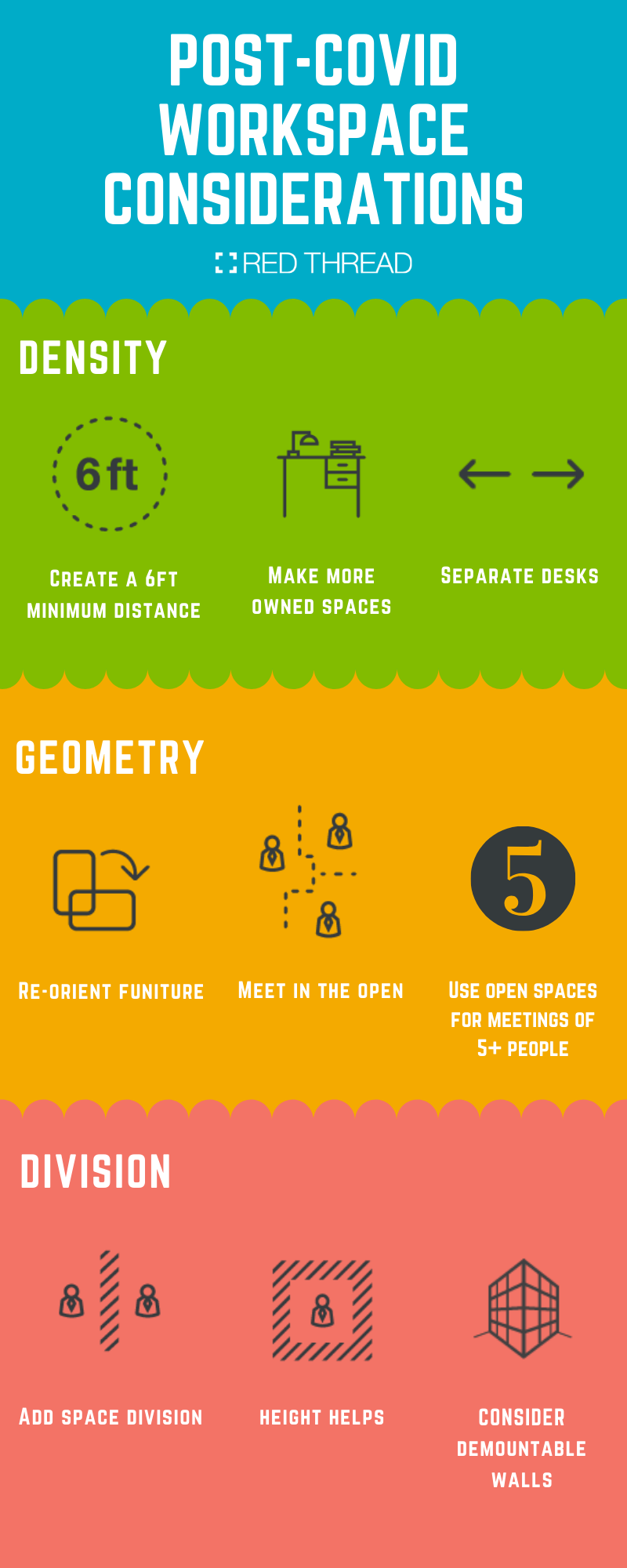As states begin rolling out workplace re-entry phased plans, it has created an urgency for companies to navigate through the complex office space planning process of preparing a workspace that promotes safety and wellbeing.
Most organizations are starting to develop both a workplace re-entry and work from home program. Companies want to bring people back to make personal connections, re-build trust in a community amongst each other, and use collaborative tools in the office for idea generation and problem solving. Since some people might be experiencing isolation fatigue, they are excited to return to the office and be together in person.
Businesses are looking for the most economical, actionable plan that accommodates social distancing requirements within their existing furniture and space design. When modifying work environments, it’s important to integrate critical space considerations that support CDC guidelines.
The following infographic illustrates density, geometry, and division considerations for your office space planning post-COVID:

Density
- Minimum distance: Create minimum 6ft distancing between people in open workstations, meeting spaces, cafés and lounge spaces. Reduce occupancy by removing desks, tables and seating, or use alternating desks.
- Separate desks: Pull workstations and desks apart to increase distancing.
- More owned spaces: Reduce/eliminate shared desking and shift to more owned individual spaces.
Geometry
- Re-orient furniture: Reconfigure desking to reduce face- to-face orientation; turn workstations to 90-degee angles to prevent workers from working directly across or behind one another.
- Meet in the open: Use open spaces for meetings of more than five people, leveraging flexible furniture with movable whiteboards and screens to create boundaries.
Division
- Add space division: Increase barriers for existing work- spaces by adding screening, storage elements, plants or partitions.
- Moveable screens: At workstations, consider increased user-movable screening and privacy devices to reduce exposure.
- Height helps: Implement the highest boundary possible above the worksurface (on all exposed sides) when a minimum 6ft distance cannot be achieved.
- Demountable walls: Create flexible private spaces with demountable walls.
Are you interested in learning more about Red Thread’s post-COVID workplace design, products and services? Visit our contact us page to connect with a Workplace Consultant today about office space planning.




